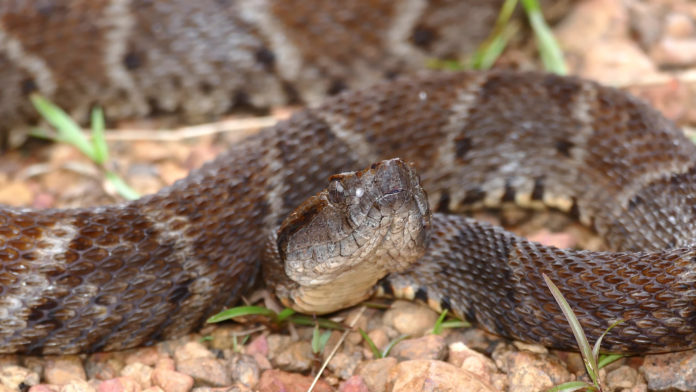In an emergency situation, stopping severe bleeding quickly can save lives.
This snake venom ‘super glue’ cuts blood clotting time to just 45 seconds. Tested on rats, the formulation sealed deep skin cuts, ruptured aortas, and severely injured livers nearly instantly. If the results hold in human trials, it could save lives on the battlefield, in the operating room, or after accidental traumas like car crashes.
The innovation was developed as an international collaboration between engineers and clinicians at Western University, the University of Manitoba, Shantou University, and the Institute of Burn Research at China’s Southwest Hospital. The study was published in Science Advances.
A key component is a blood-clotting enzyme called reptilase that is found in the venom of lancehead snakes (Bothrops atrox). Their bite triggers rapid clotting throughout the body when large amounts of the enzyme are introduced to the bloodstream, making them one of the most poisonous snakes in South America. But that rapid clotting is exactly the property the team needed to help seal an injury.
“When I was a kid, I saw poisonous snake venom clot the blood very fast,” said co-author Malcolm Xing in a University of Manitoba press release.
“The scenario has haunted me for years. Then one day I thought, why not consider the enzyme extracted from snake venom for highly efficient hemostasis. I called my collaborators to discuss the possibility.”
The researchers mixed the enzyme into a modified gelatin that can be cured with light to form a natural bioadhesive. Once applied, the enzyme locally transforms fibrinogen in the blood into fibrin to rapidly initiate clotting and seal the tissue.
“During trauma, injury and emergency bleeding, this ‘super glue’ can be applied by simply squeezing the tube and shining a visible light, such as a laser pointer, over it for few seconds. Even a smartphone flashlight will do the job,” added co-author Kibret Mequanint in a Western University press release.
This bioadhesive has lots of advantages. Compared to synthetic adhesives, it is biocompatible and non-toxic. And the leading bioadhesive on the market — clinical fibrin glue — takes twice as long to form a seal, has poor mechanical strength, and is prone to detachment or washout in the face of major bleeding.
The 45 seconds saved by using the new bioadhesive could be the difference that keeps a patient alive. It’s portable and would be easy to use in the field as part of a first aid kit.
Even under normal conditions in the operating room, bioadhesives can be used as liquid stitches to save time and reduce surgical complications.
The team has plans to move on to clinical testing, which could bring their venom-inspired bioadhesive to the market within the next five years.








































